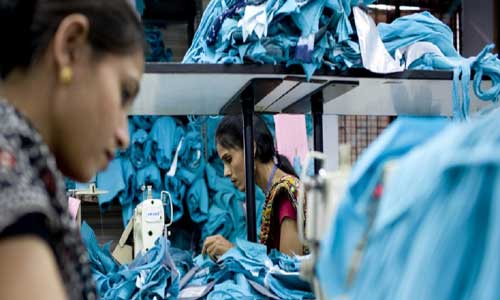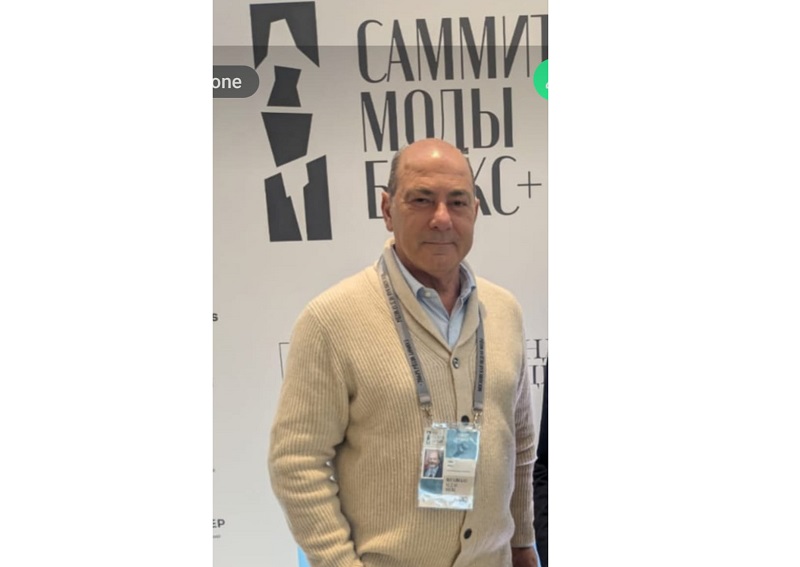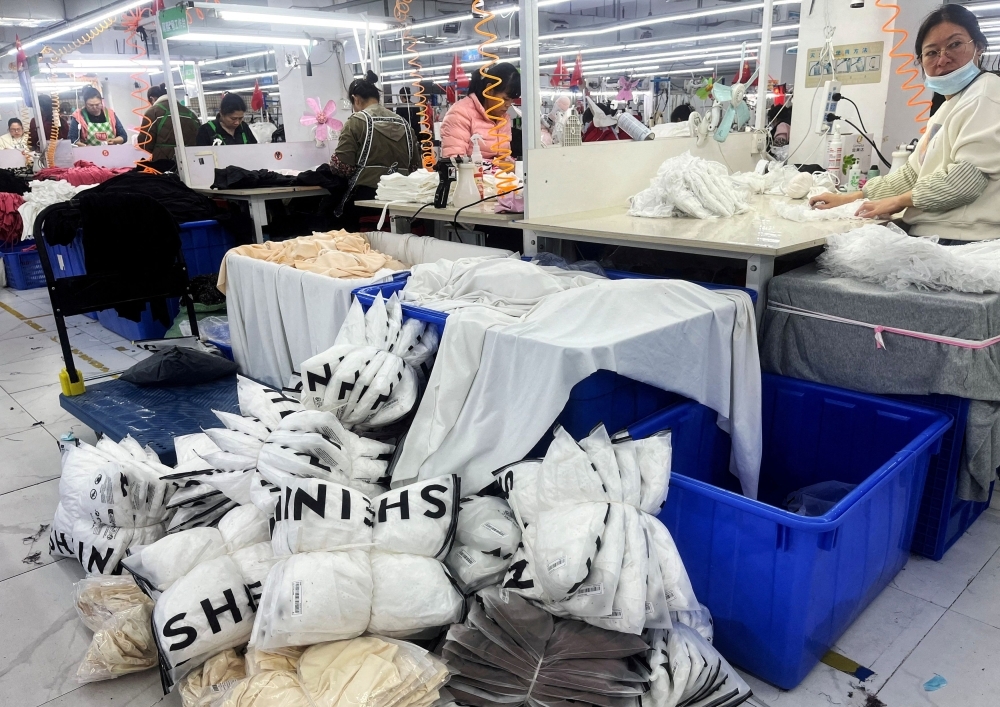FW
Indian Textile Accessories and Machinery Manufacturers Association (ITAMMA) plans to set up a textile and garment technology centre in Vietnam to introduce machines, equipment and provide after-sale services to Vietnamese customers. It will also serve as a venue for the two countries’ businesses to exchange and update on the latest technologies.
Vietnam is a potential market where Indian businesses are seeking opportunities to boost export of textile machines and equipment. As one of the world’s leading textile and garment exporters, Vietnam has a growing demand for machinery and equipment, thereby creating big opportunities for Indian firms.
Indian businesses have opportunities to supply machines and equipment at affordable prices to the Vietnamese market as machines imported from Europe have high prices. India’s export turnover of textile and garment machinery and equipment surpassed $400 million in 2016 and its earnings from Vietnam was much less. Therefore, Indian enterprises want to boost trade and business networking in Vietnam’s garment and textile sector. Indian firms can work with Vietnamese fabric and textile factories to create material supply chains, bringing long-term benefits to both sides. India is an important trade partner for Vietnam in the field of garment and textiles and machinery and Vietnam is a potential market for Indian businesses.
A report released by the National Bank of Cambodia, Cambodia’s shows garment exports grew slower than expected by about 4 per cent in the first half of the year compared with 9 per cent in the same period last year while foreign investment in the sector fell by 30 per cent.
The US and the EU are the top two destinations for Cambodia’s garments and the NBC report pointed out that in the first half of the year total US-EU garment exports was 67 per cent of the kingdom’s total exports, down from 75 per cent in the same period last year. The report also stated investment in the garment sector fell due to investors realising Cambodia, in the next three years, would no longer enjoy preferential tax treatment from the EU as it moves up the ranks from a lower income country to a lower middle income nation.
Cambodia will face tough competition in the global market in the short, medium and long term due to Vietnam, Cambodia’s main competitor in garment sector, getting preferential tax treatment in 2018 on its exports to the EU under the Free Trade Agreement, says Chea Serey, NBC’s DG. Increasing minimum wages will also put pressure on Cambodia’s competitiveness, she added. Cambodia is a highly dollarised economy, it must be careful to align minimum wage adjustments with productivity increases to keep wage costs in check and stay competitive as a manufacturer for export markets.
Meanwhile, NBC governor Chea Chanto stated that Cambodia’s GDP is estimated to grow 7 per cent in 2017. The garment sector continues to be a major contributor to the GDP, despite its slower growth rate, while the construction and tourism sectors continue to grow, says Chanto.
The uncertainty about the effect of British withdrawal from the EU on Cambodian exports to the UK is also a cause for concern, he added.
C&A, one of Europe’s leading fashion retailers has launched the first Cradle to Cradle Certified Gold products in its stores in 18 European markets. As per aa company report these recyclable T-shirts are made of 100 per cent organic cotton, with safe materials and chemicals and produced in a socially and environmentally responsible way. They have been certified at gold level by the Cradle-to Cradle Product Innovation Institute (C2CPII). The dyes used in the T-shirts available in two styles and 17 colours, were selected from the range of DyStar Levafix and Remazolreactive dyes, which received C2C Gold Level certification for Material Health from C2CPII in 2016.
DyStar strives to be part of a more sustainable future and growing a circular economy, as well as reaffirms its commitment to environmental and human health. The styles were developed in close partnership with Fashion for Good. The DyStar Group is a leading dyestuff and chemical manufacturer and solution provider, offering customers a broad portfolio of colorants, speciality chemicals, and services. DyStar’s key service divisions assist brands and retailers and their industry partners to ensure that they meet stringent quality and ecological specifications, reduce costs and shorten lead times.
The DyStar econfidence programme is designed to provide assurance to textile customers that the dyes and chemicals supplied by DyStar comply with legal requirements. Econfidence also provides expertise so that selected products are compliant with voluntary Restricted Substances Lists (RSLs), including those of brands and retailers.
ShanghaiTex 2017 focuses on latest innovative textile technology, high-growth application sectors and cross-border technology, thereby assisting industry to overcome challenges and spark new opportunities. The next edition will demonstrate the integration of information, internet and mobile electronics technology, breathing new dynamics and value to the industry in response to the customisation trend. To be held at Shanghai New International Expo Center, Pudong, Shanghai, PR China frp, November 27-30, 2017, ShanghaiTex will unleash latest and sustainable denim manufacturing technology and application under the wind of industry 4.0.
A special denim theme zone Eco-Denim Centre will be featured. A series of new and greenovation technologies including dyes, additives, textile chemicals; denim finishing equipment; and laser processing, tailoring equipment will be showcased. ShanghaiTex, is a good trading and networking occasion for industrial elites in the textile industry. The event will host denim and jeans brands, industry players and organisations. Denim makers will explore new business network and opportunities.
Also lined up is Denim Chic which will showcase latest applications of technologies for denim clothing enterprises. High-caliber experts from around the world are invited to share their insight at seminars on the challenges and opportunities of denim industry and introduce latest technology, eco-friendly and fashionable solutions.
Brandix has emerged as Sri Lanka’s most valuable export brand for the third consecutive year, reveals the 2017 Brand Finance rankings of the country’s leading brands. Brandix leads a group of highly respected export brands in apparel, IT, tea, manufacturing, processed foods, services and printing.
According to Brand Finance, the attributes taken into account for the rankings included a brand’s corporate vision, reputation and image, leadership and people, degree of innovation, and quality consciousness. The scale or size of the exporter plays a key role in being included in the listing.
Brandix has been rated as Sri Lanka’s top exporter across all industries for the past four years. In all, the group has won 25 presidential export awards. The pioneer of the concept of total solutions in Sri Lanka’s apparel sector, and a preferred supplier to some of the top retail brands in the US and Europe, Brandix is also a benchmark and international award winner for eco-friendly manufacture and commitment to environmental best practices.
Last year, Brandix was declared the country’s largest exporter overall by the Export Development Board for 2014 and 2015. Brandix has set up a textile park in Andhra Pradesh. The workforce comprises mostly women from rural areas, with schooling between seventh and tenth grades. They are trained to manufacture products for international brands and labels.
Last fiscal year, Bangladesh’s garment shipments to India fell 4.85 per cent year-on-year. One reason is Indian manufacturers are producing the same clothes at cheaper rates. Also Indian importers are not interested in sourcing from Bangladesh because of the 12.5 per cent countervailing duty, an import tax imposed on certain goods in order to prevent dumping or counter export subsidies.
Moreover, previously, India did not allow big industrial groups to invest in garment manufacturing industry but now they are not restricted in printing, dyeing, weaving, spinning or finishing. They can also set up garment manufacturing factories. Therefore, the Indian garment sector has been growing in stature every year and its market share worldwide is also increasing. Since both Bangladesh and India are strong in producing the same kinds of garments, demand for Bangladeshi goods in India is low.
The country will now export goods to India in which it has an advantage and India doesn’t. Not only garments, but also Bangladesh’s overall exports to India has declined in fiscal 2016-17. On the other hand, imports from India have been swelling every year.
The Apparel Export Promotion Council (AEPC) wants the Rebate of State Levies scheme to be continued post GST and inclusion of other state levies not subsumed in GST. The council has also requested for a drawback for central taxes outside the GST purview besides full accumulated input GST tax credit.
AEPC is the apex body of apparel exporters. It raised the issue of embedded blocked taxes which the industry is facing in central taxes. It has drawn attention to the new levies like intra company stock transfers, GST on job work, etc. which have been imposed in the GST regime but which have not been factored in the earlier announced drawback rates. It is felt these new levies will lead to a cost escalation especially in the transitionary phase.
The garment industry welcomes GST as a move to unify the national economy but not at the cost of growth of the apparel sector. AEPC feels GST has diluted most FTP benefits that the industry was availing so far besides putting a huge pressure on working capital. It wants all taxes - direct and indirect—to be reimbursed under the drawback and ROSL benefits. AEPC also wants an exemption for samples sent to buying agents within India or abroad from GST.
Halfway into the year, the Asian Development Bank has raised the estimated GDP growth rate for developing countries in Asia this year and next by a few tenths of a percentage point. In a mid-year supplement to its Asian Development Outlook report, which is updated twice a year, the ADB increased developing Asian countries’ predicted growth rate for this year from 5.7 per cent to 5.9 per cent, while next year’s growth rate was bumped up from 5.7 per cent to 5.8 per cent.
The report also suggests Cambodia’s inflation rate would increase from an earlier prediction of 3.4 per cent because of strong demand and increased food prices. The bank inched up its growth rates for Asia’s developing nations because the region saw higher local prices for consumer goods and a stronger demand for exports than originally predicted.
It has not changed its prediction for southeast Asia’s overall growth rate, which is still expected at 4.8 per cent this year. The Asian Development Bank was conceived in the early 1960s as a financial institution that would be Asian in character and foster economic growth and cooperation in one of the poorest regions in the world.
ADB assists its members, and partners, by providing loans, technical assistance, grants, and equity investments to promote social and economic development.
"The Ethical Trading Initiative (ETI) aimed at gaining access to highly restricted factories in the Tamil Nadu with a ‘hygiene awareness’ program and use that as a platform for promoting workers' rights. Five years and $630,000 later, the ETI, which brings together labels like H&M, GAP and Burberry with unions, factory owners and civil society groups, has done little more than teach workers hand washing, rue critics. Nambi Chelliah of the Centre for Social Education and Development part of ETI's initial meetings points out, it is more of image management. Brands are using the ETI platform to safeguard themselves."

The Ethical Trading Initiative (ETI) aimed at gaining access to highly restricted factories in the Tamil Nadu with a ‘hygiene awareness’ program and use that as a platform for promoting workers' rights. Five years and $630,000 later, the ETI, which brings together labels like H&M, GAP and Burberry with unions, factory owners and civil society groups, has done little more than teach workers hand washing, rue critics. Nambi Chelliah of the Centre for Social Education and Development part of ETI's initial meetings points out, it is more of image management. Brands are using the ETI platform to safeguard themselves.

Workers' representatives debate that employees in textile mills and factories have not benefited, with fair wages, contracts and a workplace free of abuse is still a distant dream for most. But ETI is in no mood to accept these claims. It counters saying progress has been made in Tamil Nadu through community programs and peer groups at factories and mills that discuss rights beyond hygiene. Alok Singh, ETI's South Asia head, was quoted saying this is the only large-scale initiative that is working within mills to address such issues and to build the trust of all concerned. We are showing such programs can work to the benefit of all.
Fuel to fire
ETI has been in existence since 1998 to address issues like child labour and workers' rights in countries including South Africa, Thailand and Peru, it began focussing on India's textile workers in Tamil Nadu in 2012. Singh says when the program started there was no appetite for transparency among mills themselves.
ETI staff infiltrated high-walled compounds where employees live and work, and went about asking women how often they brush their teeth, when they wash their hands and how much they spend on sanitary towels. Posters demonstrating the correct way to wash hands were put up near restrooms and adolescent girls were told to eat more greens and fruits. They were also taught how to deal with menstrual cramps with diet and medication. The initiative has contributed to an attitudinal shift within mill managers, who have seen the benefits of treating workers better, and allowing workers to be educated on their rights, Singh said.
While ETI officials feel the initiative have met with initial success, critics deny this. As a trade union member questioned freedom of association is in (the ETI's) code, so is assuring fair wages and making sure there is no exploitation. How will workers eat more fruits if they can't afford 1t? Activists and labour rights charities say ETI has failed to get brands to map and disclose information on supply chains – from the cotton picked in the fields to the buttons stitched on the garments – which is key to ending exploitation of workers.
Tim Connor, lecturer at Newcastle Law School in Australia and co-author of a 2016 report on ETI's effectiveness highlighted if they were more transparent about their supply chains, it would make it possible for global advocacy organisations to increase public pressure on companies to take action to ensure respect for labour rights. However, Singh observes transparency would increase as the initiative progressed and move forward next five years, ETI expects to have access to clearer supply chain information from participating brands.
Three big US synthetic fiber producers have filed petitions against China, India, South Korea and Taiwan for dumping fine denier polyester staple fiber into the US market. They say the fiber is sold in the US at less than fair value and this is hurting domestic industry.
The three fiber producers are: DAK Americas, Nan Ya Plastics and Auriga Polymers. They want the US to investigate the dumping and impose anti-dumping and countervailing duties on imports of the fiber from those countries. The petitions allege that producers in each of the countries are dumping the fiber in the US market at sizeable margins: 88.07 per cent to 103.06 per cent from China, 21.31 per cent to 29.7 per cent from India, 27.16 per cent to 45.23 per cent from South Korea and 29.32 per cent to 43.81 per cent from Taiwan.
Anti-dumping duties are intended to offset the amount by which a product is sold at less than fair value, or dumped, in the US. The margin of dumping is calculated and estimated duties in the amount of the dumping are collected from importers. Countervailing duties are intended to offset unfair subsidies that are provided by foreign governments and benefit the production of a particular good.












